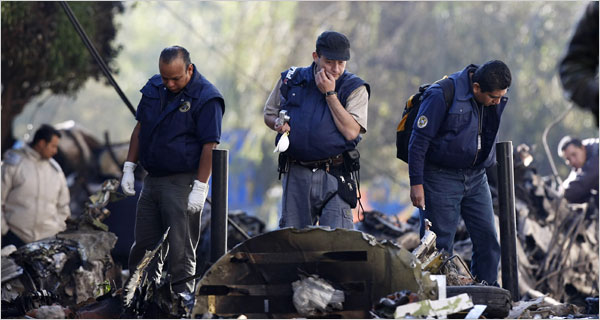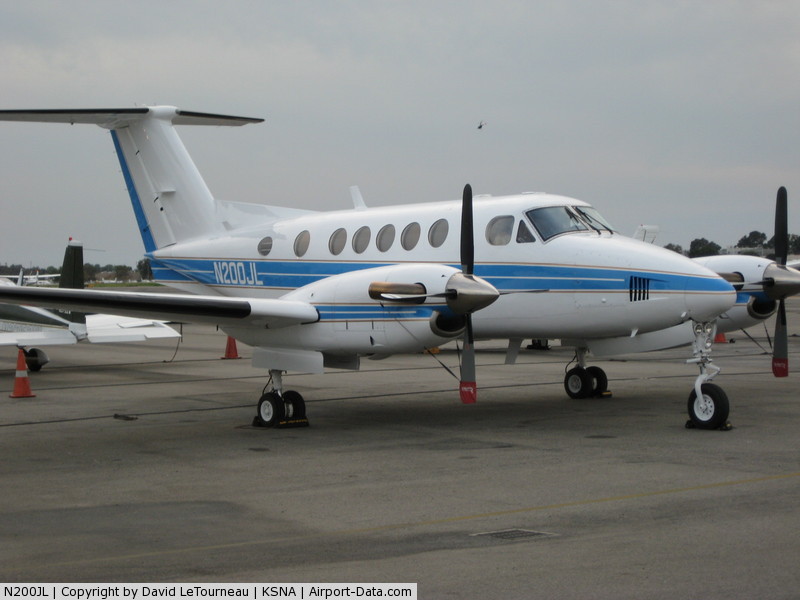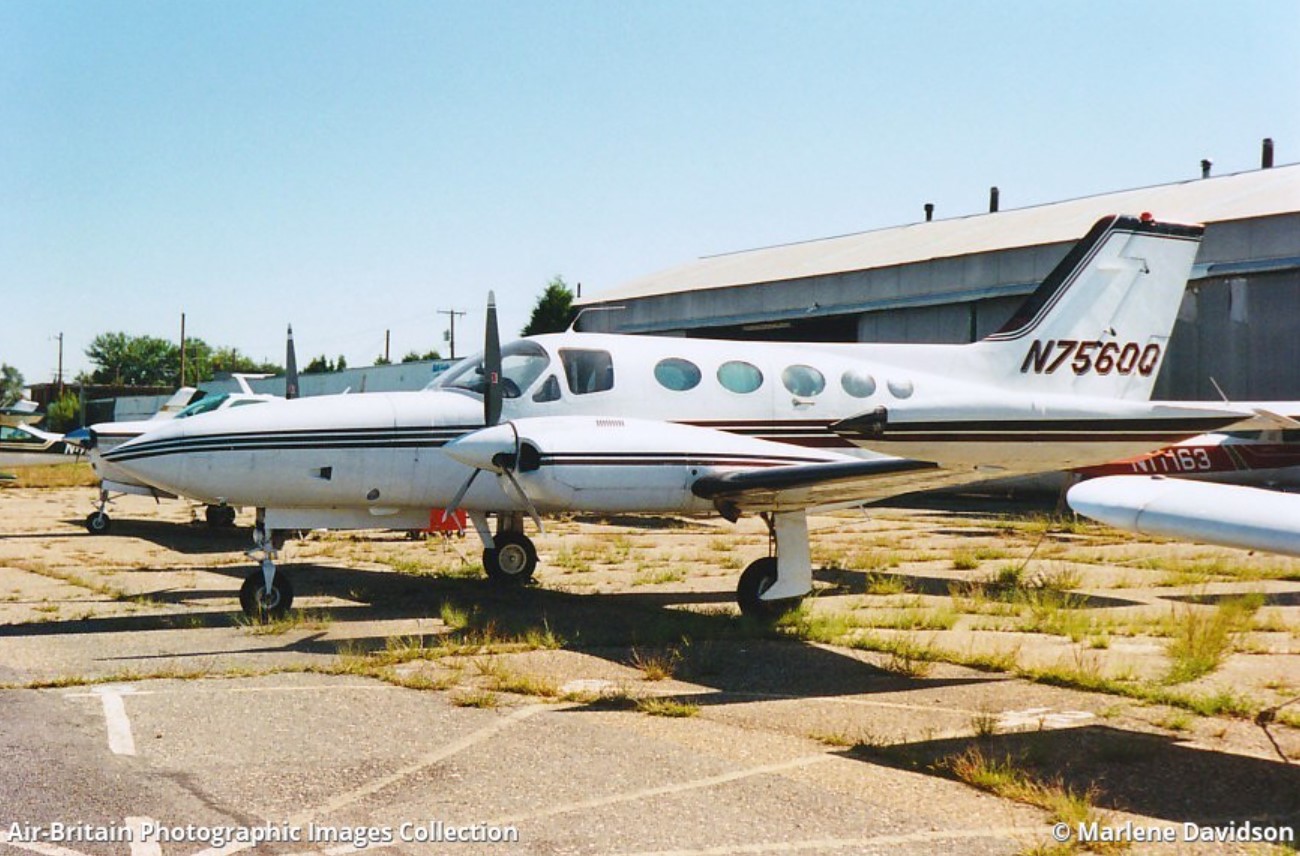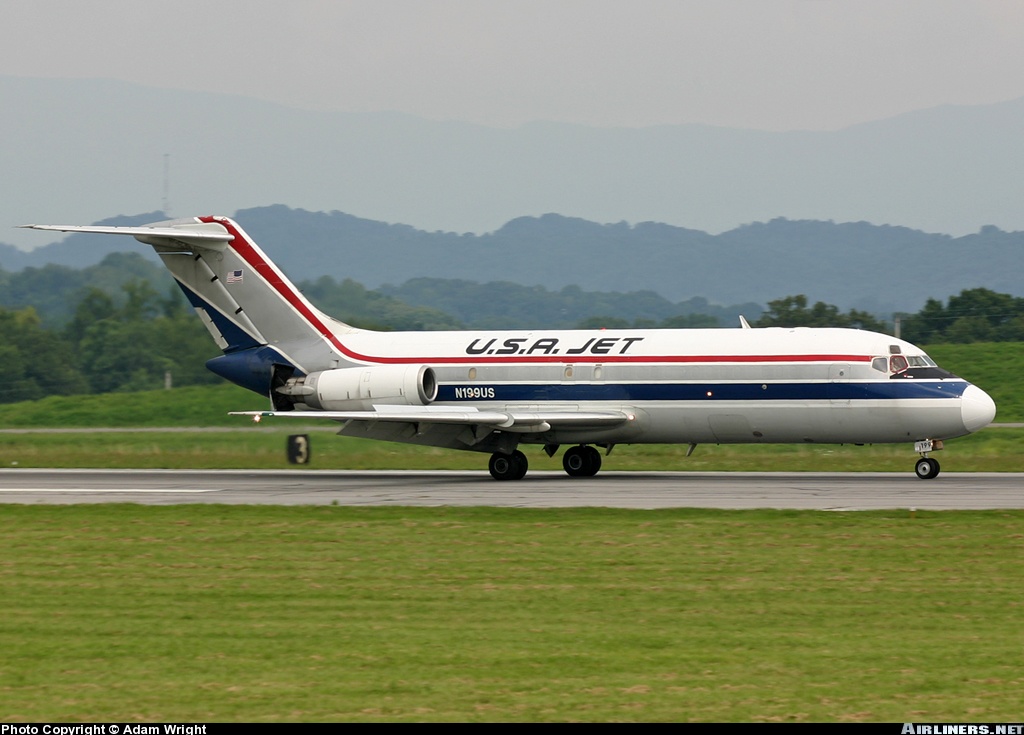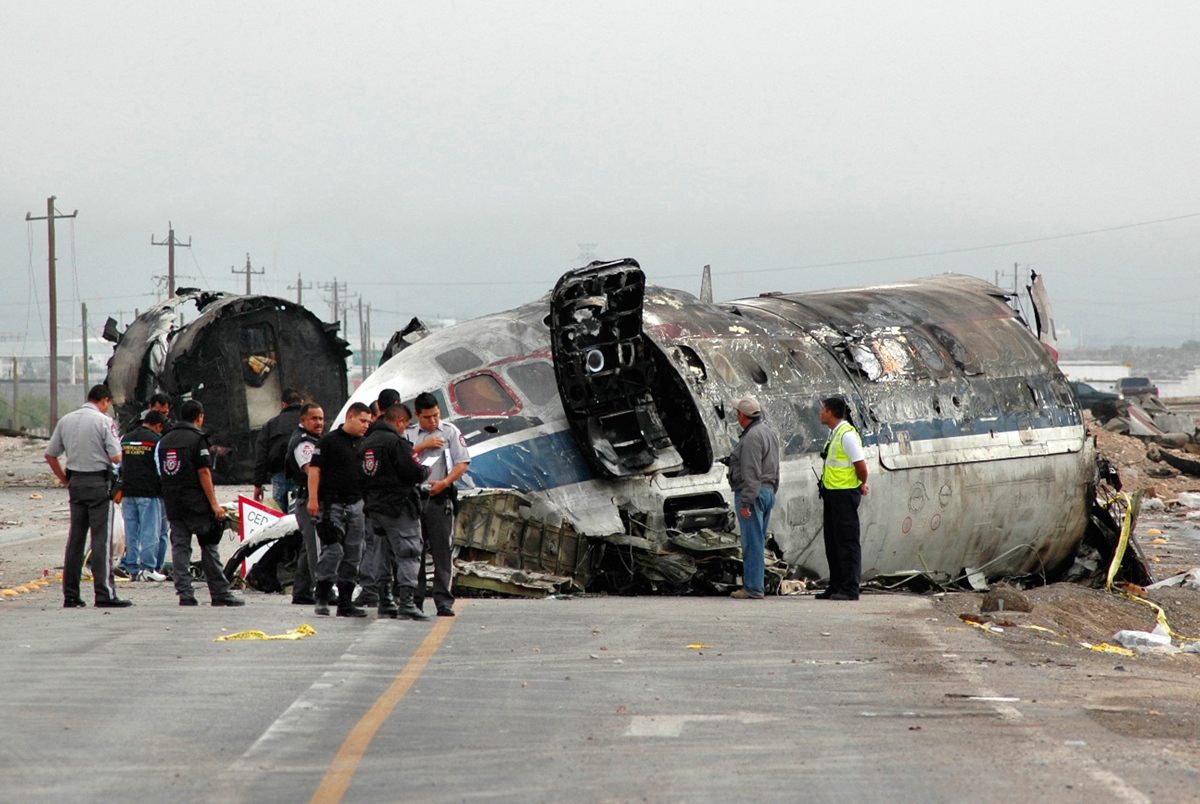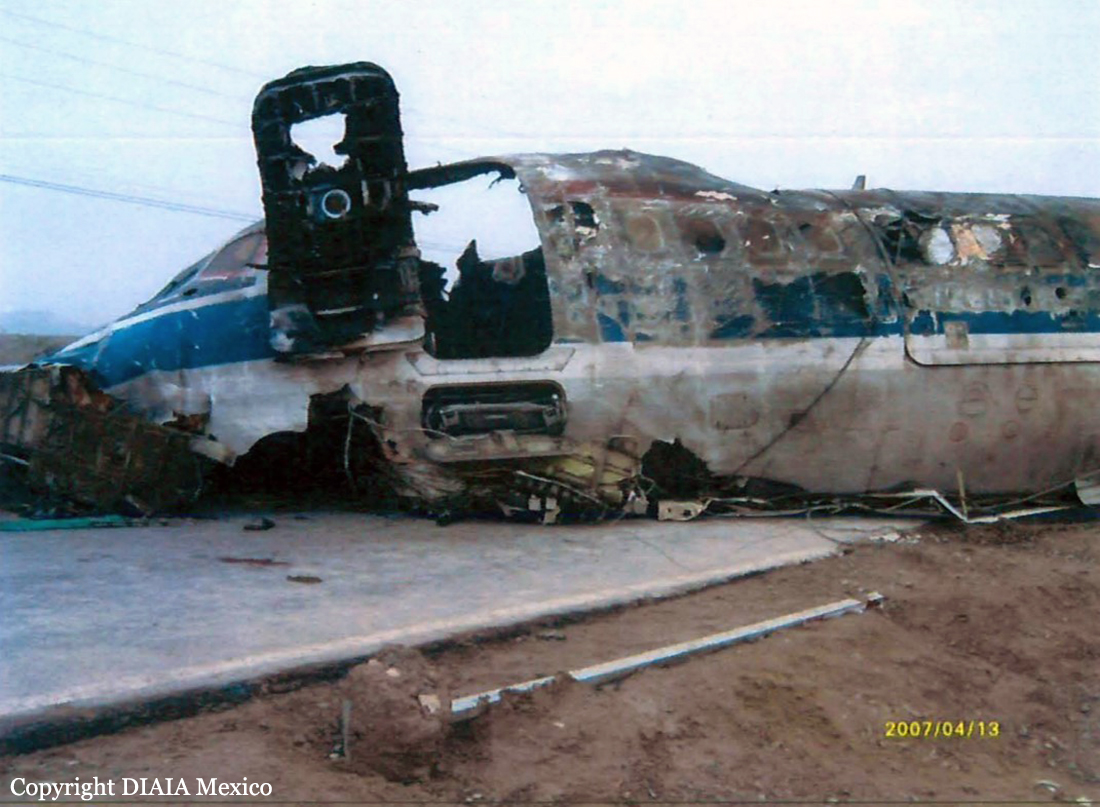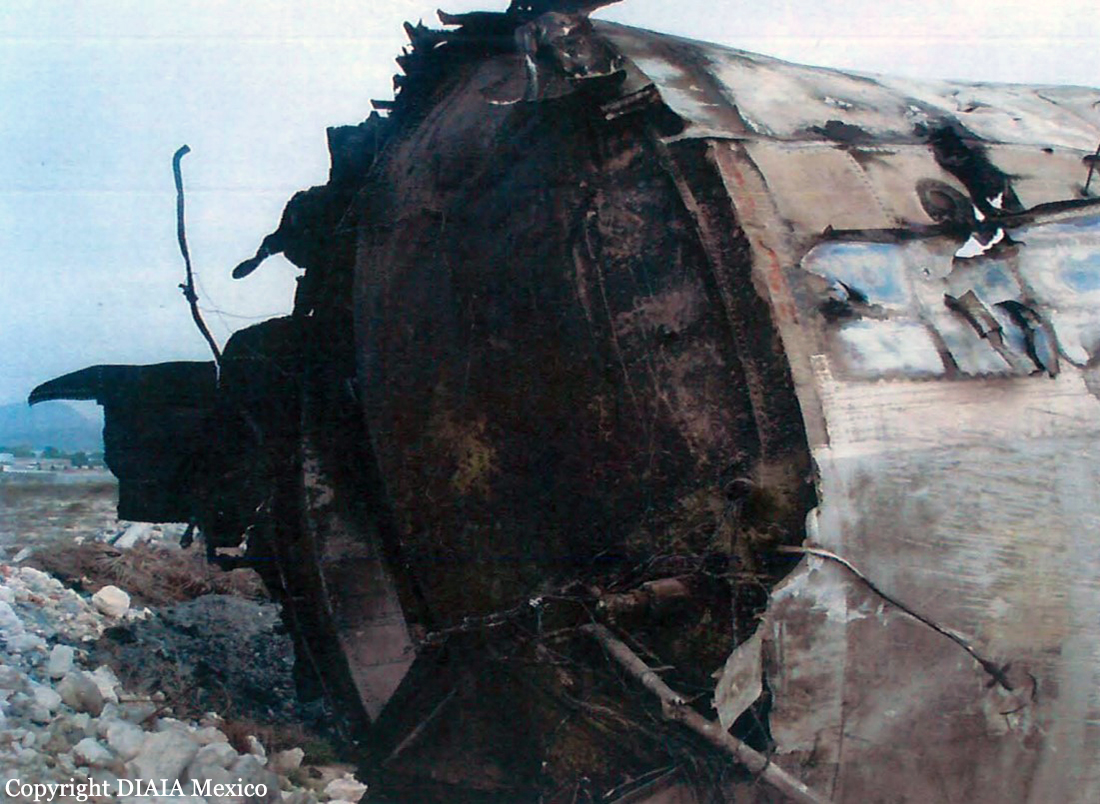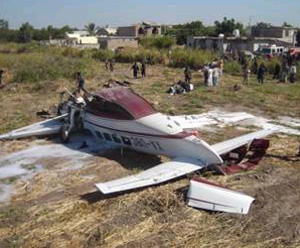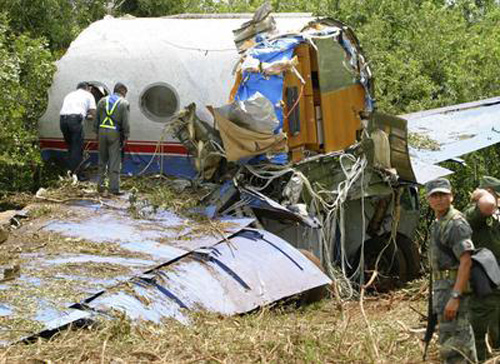Crash of a Learjet 45 in Mexico City: 16 killed
Date & Time:
Nov 4, 2008 at 1846 LT
Registration:
XC-VMC
Survivors:
No
Schedule:
San Luis Potosí – Mexico City
MSN:
45-028
YOM:
1999
Crew on board:
3
Crew fatalities:
Pax on board:
6
Pax fatalities:
Other fatalities:
Total fatalities:
16
Captain / Total hours on type:
180.00
Copilot / Total hours on type:
57
Aircraft flight hours:
2486
Aircraft flight cycles:
2215
Circumstances:
Following an uneventful flight from San Luis Potosí, the crew was cleared to the MATEO VOR and for an ILS/DME approach to runway 05R at Mexico-Benito Juarez Intl Airport, then was instructed by ATC to increase their speed to 220 knots. The Learjet was trailing a Boeing 767-300 (Mexicana Flight 1692 from Buenos Aires), which was instructed to decrease speed to 160 knots to maintain separation with a preceding Airbus A318. At 18:41 a further instruction was given to slow down to an indicated airspeed of 150 knots. At 18:42 the Boeing 767 crossed MATEO VOR at a ground speed of 224 knots. The Learjet was following at 8 nautical miles (NM) at a ground speed of 272 knots. At 18:44 the controller instructed Mexicana Flight 1692 to slow down to the minimum approach speed. At that time, the Learjet 45 was crossing the MATEO VOR with a ground speed of 262 knots, approximately 5.7 NM behind. The controller then instructed the Learjet crew to reduce their airspeed to 180 knots. This was acknowledged but it took 16 seconds for the crew to take action. Separation between the Boeing 767 and Learjet had decreased to 3.8 NM and the Learjet entered the wake turbulence of the 767. Control was lost and the aircraft entered an uncontrolled descent, crashing on the Monte Pelvoux and Ferrocarril de Cuernavaca Avenues. The aircraft disintegrated on impact and all 9 occupants were killed as well as 7 people on the ground. Some buildings were damaged, about 20 cars were destroyed and 40 people on the ground were injured, some seriously. Among the passengers were:
Juan Camilo Mouriño Terrazo, Interior Minister,
José Luis Santiago Vasconcelos, General Attorney,
Miguel Monterrubio Cubas, Director for Social Communication.
Juan Camilo Mouriño Terrazo, Interior Minister,
José Luis Santiago Vasconcelos, General Attorney,
Miguel Monterrubio Cubas, Director for Social Communication.
Probable cause:
Loss of control at low altitude and subsequent impact of the aircraft with the ground after it encountered wake turbulence caused by a preceding aircraft.
The following contributing factors were identified:
- Lack of adequate crew training on Learjet 45,
- Delay of the crew to reduce the approach speed,
- Lack of Air Traffic Control to correct the excessive approach speed of the aircraft,
- Fatigue accumulated by ATC,
- Grant of flight capacity, administrative problems and probable corruption,
- Insufficient monitoring of the aircraft operator to provide maintenance and operation.
The following contributing factors were identified:
- Lack of adequate crew training on Learjet 45,
- Delay of the crew to reduce the approach speed,
- Lack of Air Traffic Control to correct the excessive approach speed of the aircraft,
- Fatigue accumulated by ATC,
- Grant of flight capacity, administrative problems and probable corruption,
- Insufficient monitoring of the aircraft operator to provide maintenance and operation.
Final Report:

